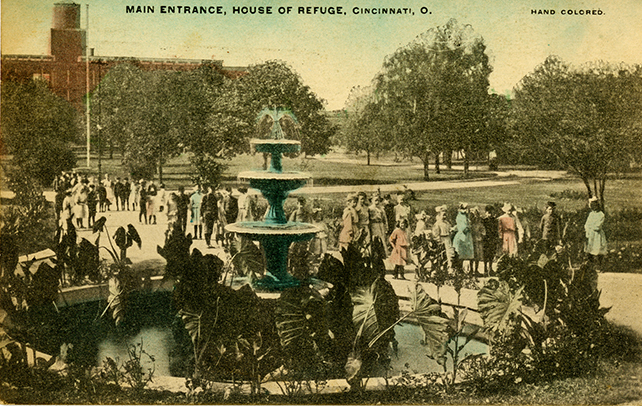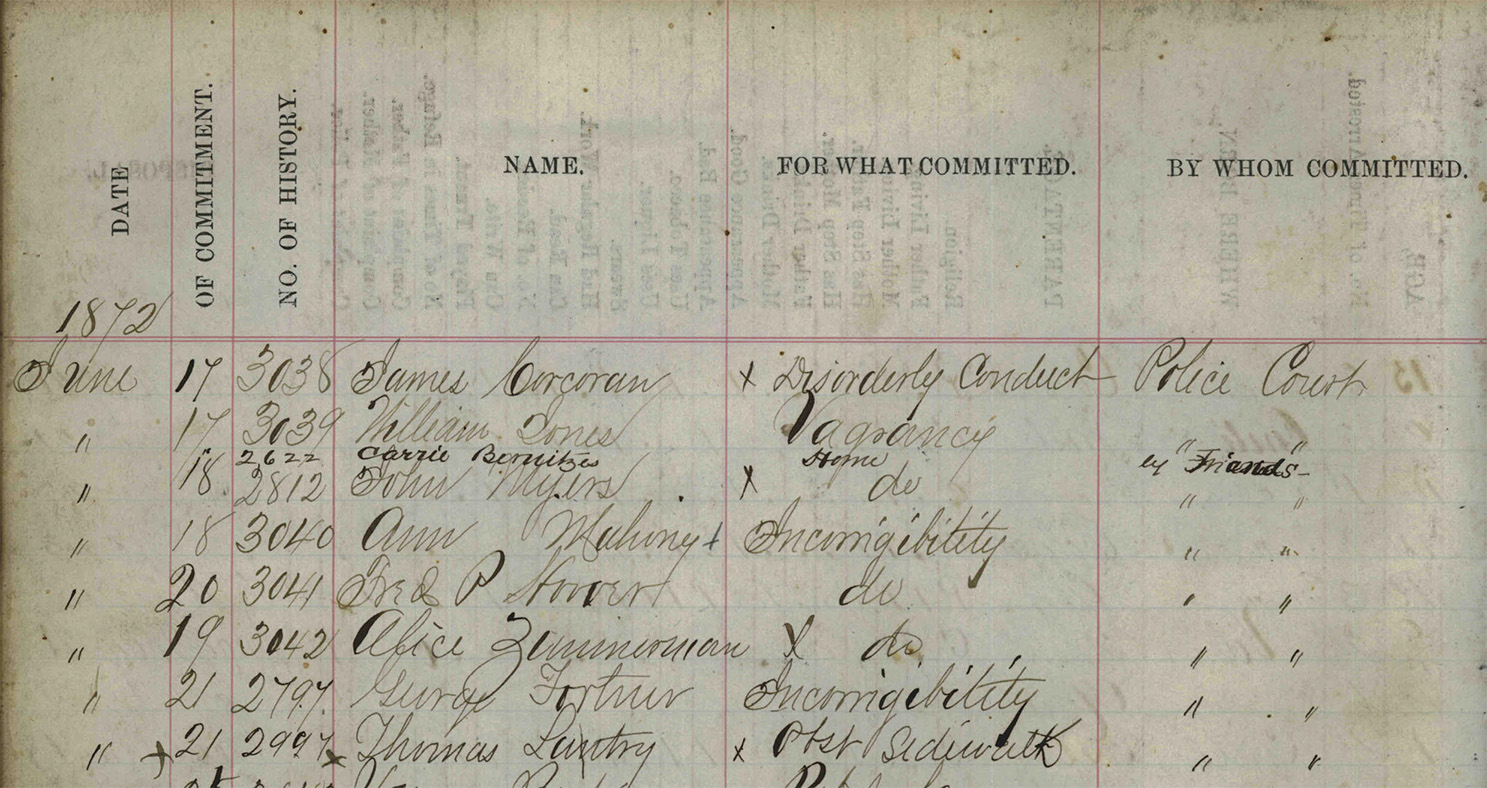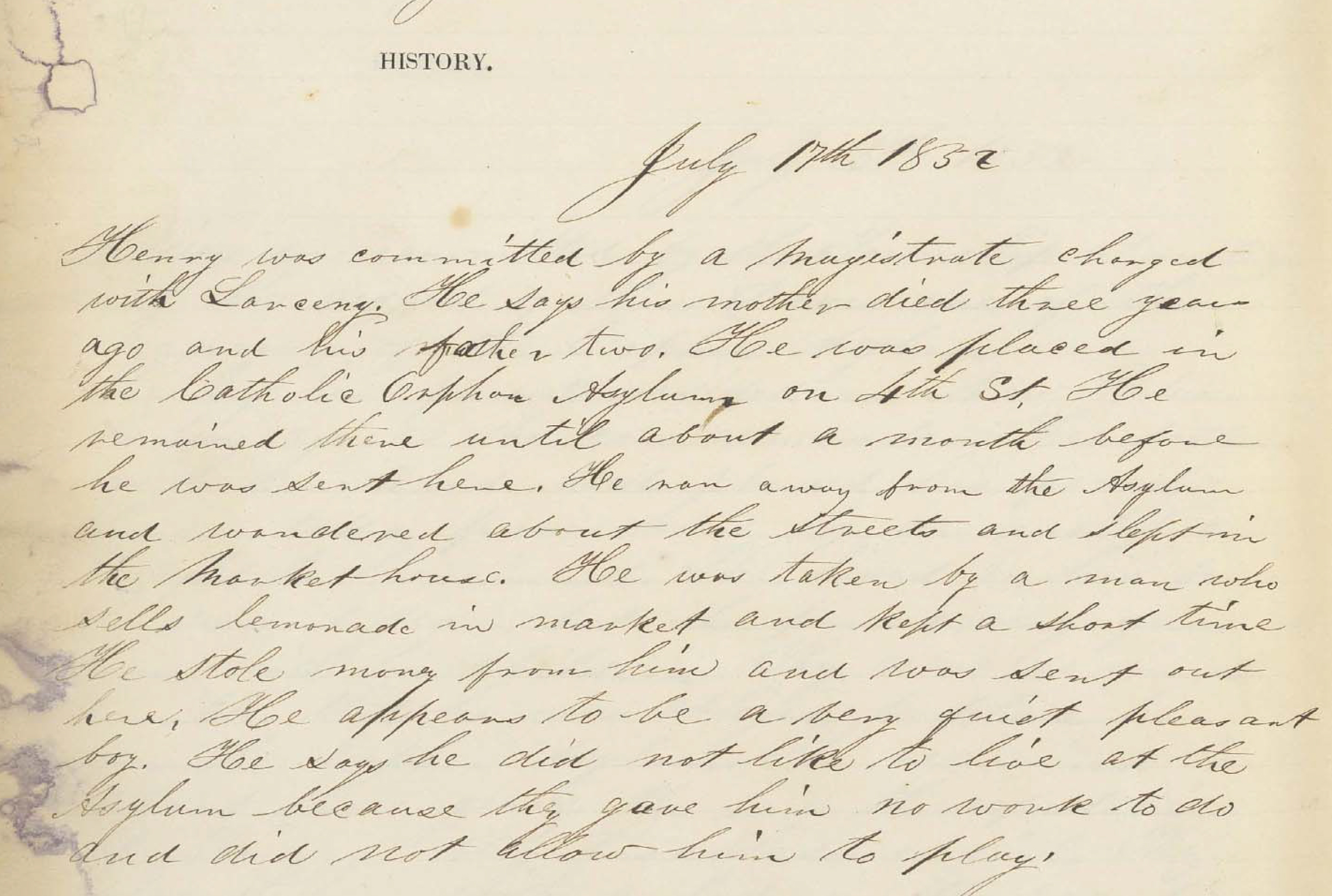 As anyone who has done historical research can tell you, locating old records is not always easy. Sometimes records simply were not kept. Other times, they were destroyed by fire, water damage, or pests. The House of Refuge records at UC is one collection in which the records are incomplete. The collection consists of five volumes and include inmate registers, employee registers, and a financial ledger. There are two volumes of inmate registers in the collection, which cover the years 1869-1882 and 1891-1902. Missing from the collection at UC are the years 1850-1869, 1883-1890, and 1902-1912.
As anyone who has done historical research can tell you, locating old records is not always easy. Sometimes records simply were not kept. Other times, they were destroyed by fire, water damage, or pests. The House of Refuge records at UC is one collection in which the records are incomplete. The collection consists of five volumes and include inmate registers, employee registers, and a financial ledger. There are two volumes of inmate registers in the collection, which cover the years 1869-1882 and 1891-1902. Missing from the collection at UC are the years 1850-1869, 1883-1890, and 1902-1912.
This fall while conducting some general research related to the House of Refuge, I started searching local libraries for items connected to the history of the House of Refuge. Through a simple catalog search, I discovered that the Public Library of Cincinnati and Hamilton County (PLCH) had three volumes of House of Refuge records! Even more exciting was how well these records complimented the collections at UC. Although registers at the University of Cincinnati list the name of the children who were admitted to the House of Refuge, their offense (or reason for being sent to the House of Refuge), and some general family information, there really is not much detail on the specifics of each child’s case or information on what happened to them after they left the House of Refuge. The records at PLCH do provide specific information on inmates’ family history, offense, and the details of their release from the House of Refuge.

A page from the inmate registers at the University of Cincinnati, volume 4, page 19. See the entire page at http://hdl.handle.net/2374.UC/712978
The first volume at the PLCH is minutes of the Board of Directors of the House of Refuge from May of 1874 through December of 1885. The minute book provides a closer look into the decisions made by the Board of Directors regarding the lives of the children in the House of Refuge and decisions regarding institutional policies. There are also discussions of events that occurred at the House of Refuge. This minute book has not been digitized, but it does overlap in dates with volume 4 of the inmate registers at the Archives and Rare Books Library at the University of Cincinnati: https://drc.libraries.uc.edu/handle/2374.UC/712772
Two additional volumes at PLCH contain case records detailing the histories of the children who were admitted to the House of Refuge. The volumes span the dates from October of 1850 through July 1852 and September 1883 through September 1885 and have recently been digitized by the Public Library of Cincinnati and Hamilton County. They are available at: http://digital.cincinnatilibrary.org/digital/collection/p16998coll15/search/searchterm/House%20of%20Refuge/field/title/mode/all/conn/and/order/title/ad/asc

An example of a case history of an inmate in the House of Refuge, Case Record No. 319, Case Records of Children Admitted to the House of Refuge, covering cases 1-321 October 25, 1850 through July 17, 1852, volume 1, From the Collection of the Public Library of Cincinnati and Hamilton County
Together the case records and the minute book at PLCH provide a glimpse into the complicated lives of the children who were sent to the House of Refuge. As you can imagine, many children came from poverty-stricken families, and many had also experienced the loss of a parent or even both parents. What is really unique about the records at PLCH, though, is that they allow us to learn when children left the House of Refuge and where they went. This information is not included in the inmate registers available at UC. Many children and teenagers who had been accused to committing crimes were eventually released to a parent or family member. Children who did not have family to care for them were often indentured, many times to farmers, which was a common practice among juvenile detention facilities and orphanages during the mid-to-late 19th century.
In the vast majority of the cases, we only have the perspective of the administrators of the House of Refuge. I am still in search of items to tell the children’s point of view. Yet, these additional House of Refuge records help to show the complexity of the lives of the children in the House of Refuge and fill in some important gaps in the history of the institution. For more information on the records at the Public Library of Cincinnati and Hamilton County, contact the Genealogy and Local History Department. For more information on the House of Refuge records at the University of Cincinnati, visit the digital collection at: http://digital.libraries.uc.edu/collections/refuge/ or visit the Archives and Rare Books Library in person on the 8th floor of Blegen Library. You can also call ARB at 513.556.1959 or email the archivists at archives@ucmail.uc.edu, or follow ARB on Facebook at https://www.facebook.com/ArchivesRareBooksLibraryUniversityOfCincinnati
